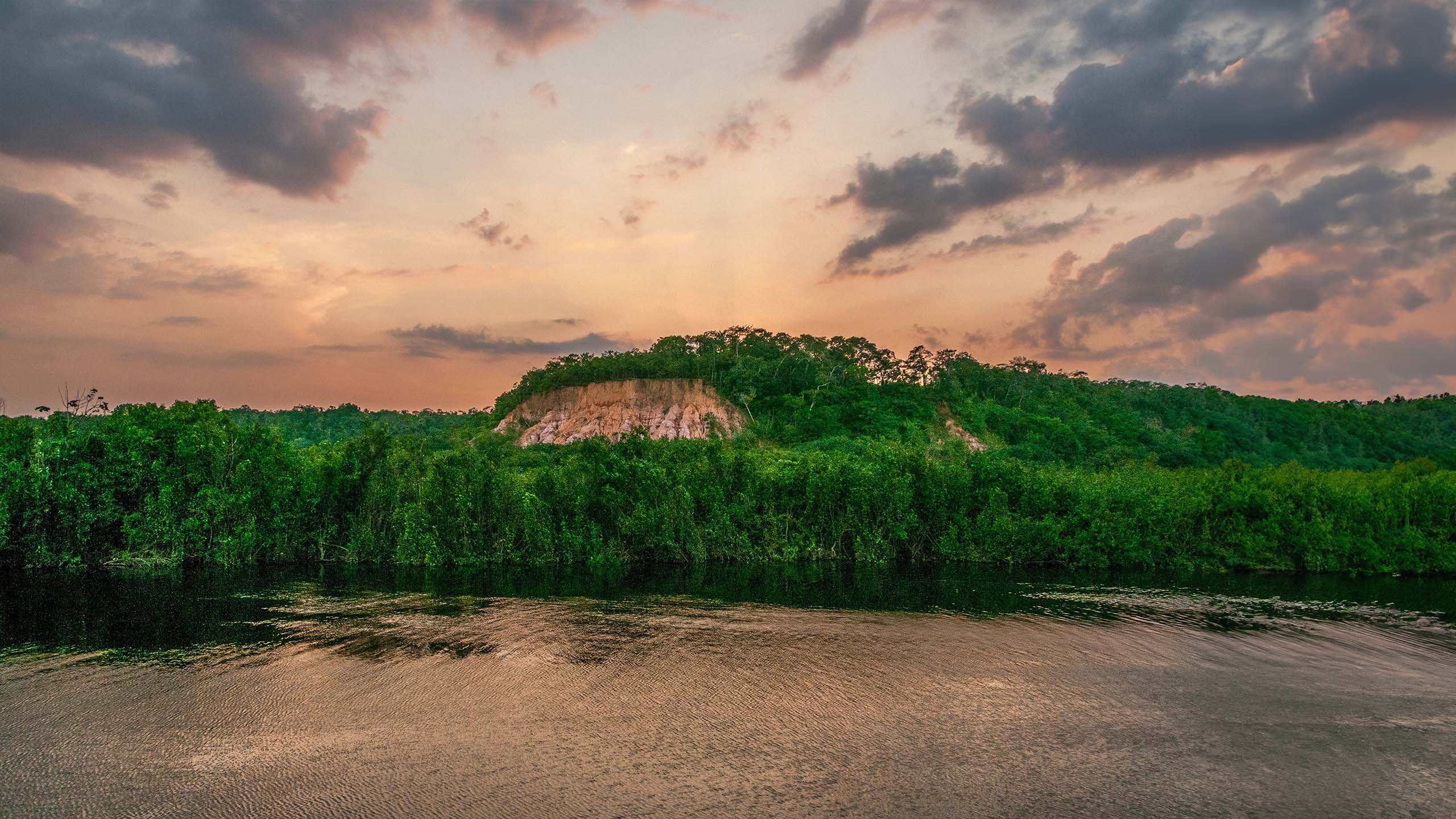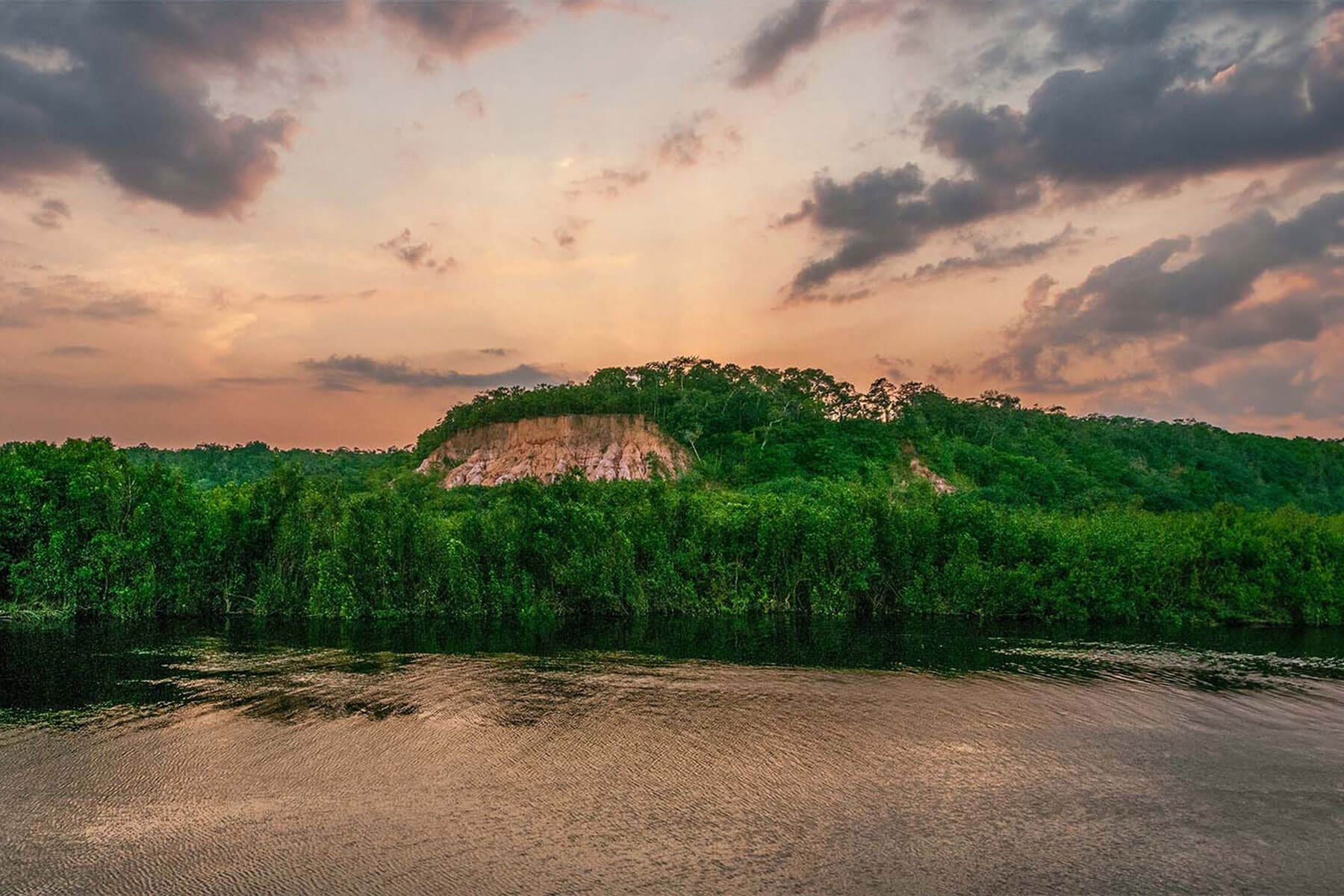Reforestation In the
Amazon Rainforest
The largest rainforest ecosystem on Earth, the Amazon spans nine countries and is home to approximately 10% of the world’s known biodiversity — including species like the Jaguar, Macaw, and Amazon River Dolphin. Covering less than 2% of the Earth’s surface, the Amazon is responsible for around 20% of the oxygen produced on land via photosynthesis. And with 90-140 billion metric tons of carbon contained in its biomass and soils, it plays a critical climate role.
Unfortunately, the Amazon Rainforest is also a high-risk zone for forest loss. Over the past 40 years, 17% of the Amazon has been lost to deforestation and climate change. When dense, humid rainforest is replaced with drier agricultural lands, it can accelerate regional warming and drying effects — making the forest more vulnerable to fires and reducing its capacity to store carbon.

Amazon Rainforest Stats
16,000
Tree species
The Amazon is estimated to contain 16,000 tree species.
The Discovery Of The Amazonian Tree Flora, Scientific Reports
400-500
Indigenous tribes
Around 400-500 Indigenous tribes call the Amazon rainforest home.
10 amazing Amazon facts!, National Geographic Kids
40%
Of Brazil
The Amazon comprises nearly 40% of Brazil’s total area.
Amazon Rainforest, Encyclopedia Britannica
2.5M
Insects
2.5 million insect species can be found in the Amazon.
10 amazing Amazon facts!, National Geographic Kids
Project Highlights
Reforestation is key to protecting the Amazon's biodiverse primary forests and restoring degraded land. With so much of the world dependent on this ecosystem, it’s more important now than ever to reforest the Amazon. Learn about three recent reforestation projects that planted trees in the Amazon Rainforest!

Amazon Reforestation Through Agroforestry
This project worked to empower communities to transition away from overexploiting their land, making reforestation through agroforestry achievable. Agroforestry provides long-term income that is sustainable economically and environmentally. Through practical, hands-on training, communities in the Peruvian Amazon gained the skills and knowledge needed to restore forest cover and increase farmers’ revenue. By balancing sustainable agroforestry with native tree plantation, this project helped restore nutrients to the soil and reduce further degradation.
Araguaia Biodiversity Corridor
Focusing its efforts in Brazil, this project’s goal is to plant indigenous trees on a large scale to help realize the Araguaia Biodiversity Corridor. The Araguaia Biodiversity Corridor will become the longest of all nature corridors on Earth — and one of South America’s largest reforestation projects ever. Biodiversity corridors, like this one, offer the opportunity to plan and manage conservation actions, ensuring the longevity of many wildlife species.


Amazon Restoration in Indigenous Communities
With so many indigenous communities dependent on the Amazon for survival, projects that help restore and revitalize indigenous land are vital. This project focuses efforts on restoring 520 hectares of degraded land across five indigenous communities within the Peruvian Amazon. The goal is to not only support communities, but also decrease the pressure on primary standing forests in the Amazon, ensuring the future prosperity of the Amazon and its inhabitants.


